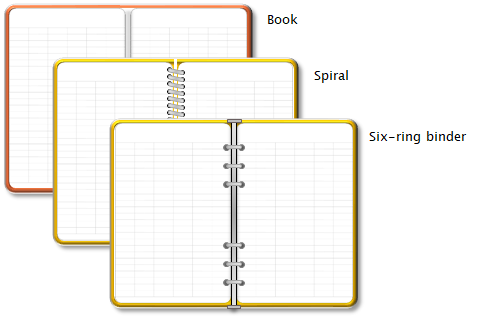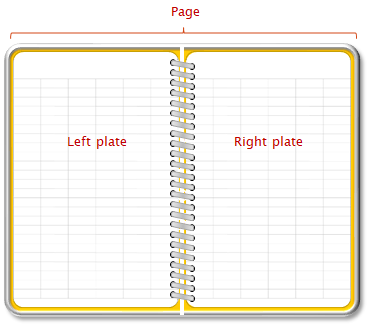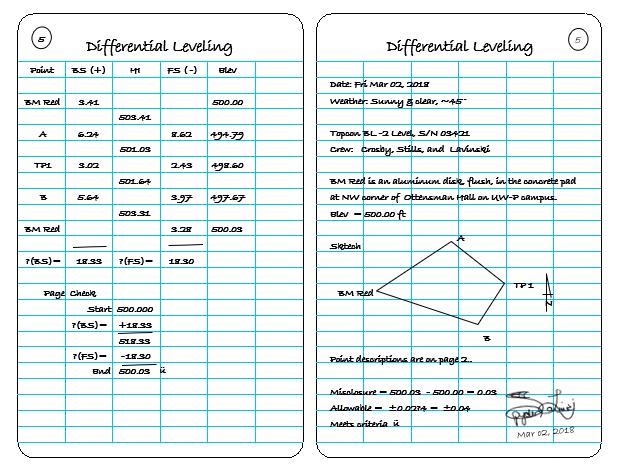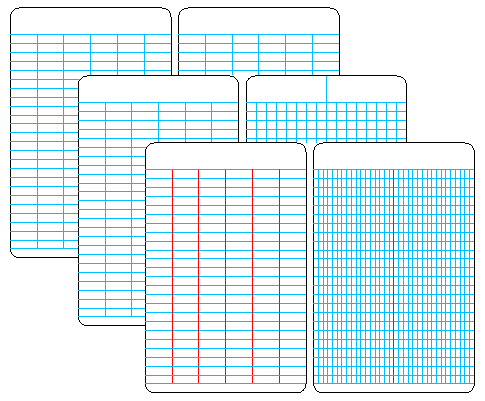C. Physical Format
1. Field books
Individual project field notes are generally subsets of a larger series of survey operations and contained in field books. Three main field book types are defined by their method of holding pages together, Figure C-1:
- Book - Uses a sewn or glued binding; hard- or soft-cover.
- Spiral bound - Pages are held together with a spiral or comb metal binding which allows the book to be folded back on itself for easier note taking.
- Binder - Loose-leaf pages are held together with two sets of three-ring clips. Its advantage is that the pages can be removed for filing after project completion and can reused with additional paper.
 |
| Figure C-1 Field Book Types |
2. Page and plate
Unlike a traditional book where each side of each sheet is a page, a field book page is the combined left and right sides when the book is laid out flat. Left of the binding is the left plate, on the right is the right plate, Figure C-2.
 |
| Figure C-2 Page and Plates |
The left plate is used primarily to record field measurements and perform necessary running calculations. On the right plate is recorded support information: weather, equipment, personnel, sketches, etc. These two plates compliment each other so together are referred to as a page.
Figure C-3 shows a page of Differential Leveling field notes. The left plate contains measurements and running calculations. Support information on the right plate identifies the weather conditions, equipment, personnel & responsibilities, bench mark description, sketch, and closure computations. The circled "5" at top left and top right is the page number.
 |
| Figure C-3 Differential Leveling Notes |
3. Sheet styles
There are many different ways to organize field book pages based on survey operation. The Differential Level notes in Figure C-3 is one way collection can be structured, there are others which we'll look at in a bit.
To provide field note organization flexibility, a number of different sheet styles are available. These differ primarily in the number of printed columns on each plate. Figure C-4 shows three common styles.
 |
| Figure C-4 Common Sheet Styles |
Because the back of a right plate for one page is the left plate for the next page, the front and back of a sheet will not necessarily be the same style.
A bound field book (sewn/glued and spiral) has a single sheet style throughout; a binder field book can be configured with any style (even mixed).